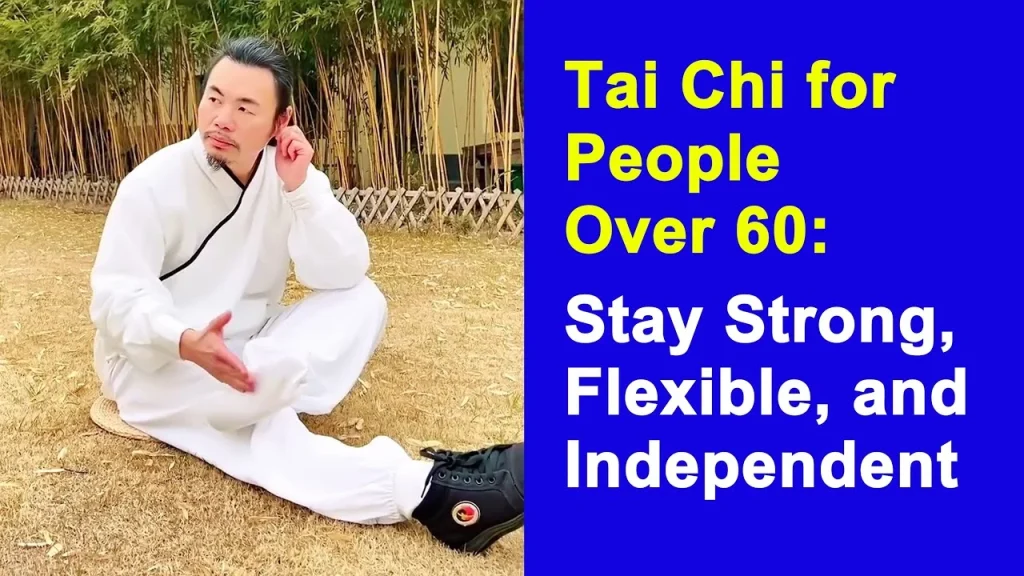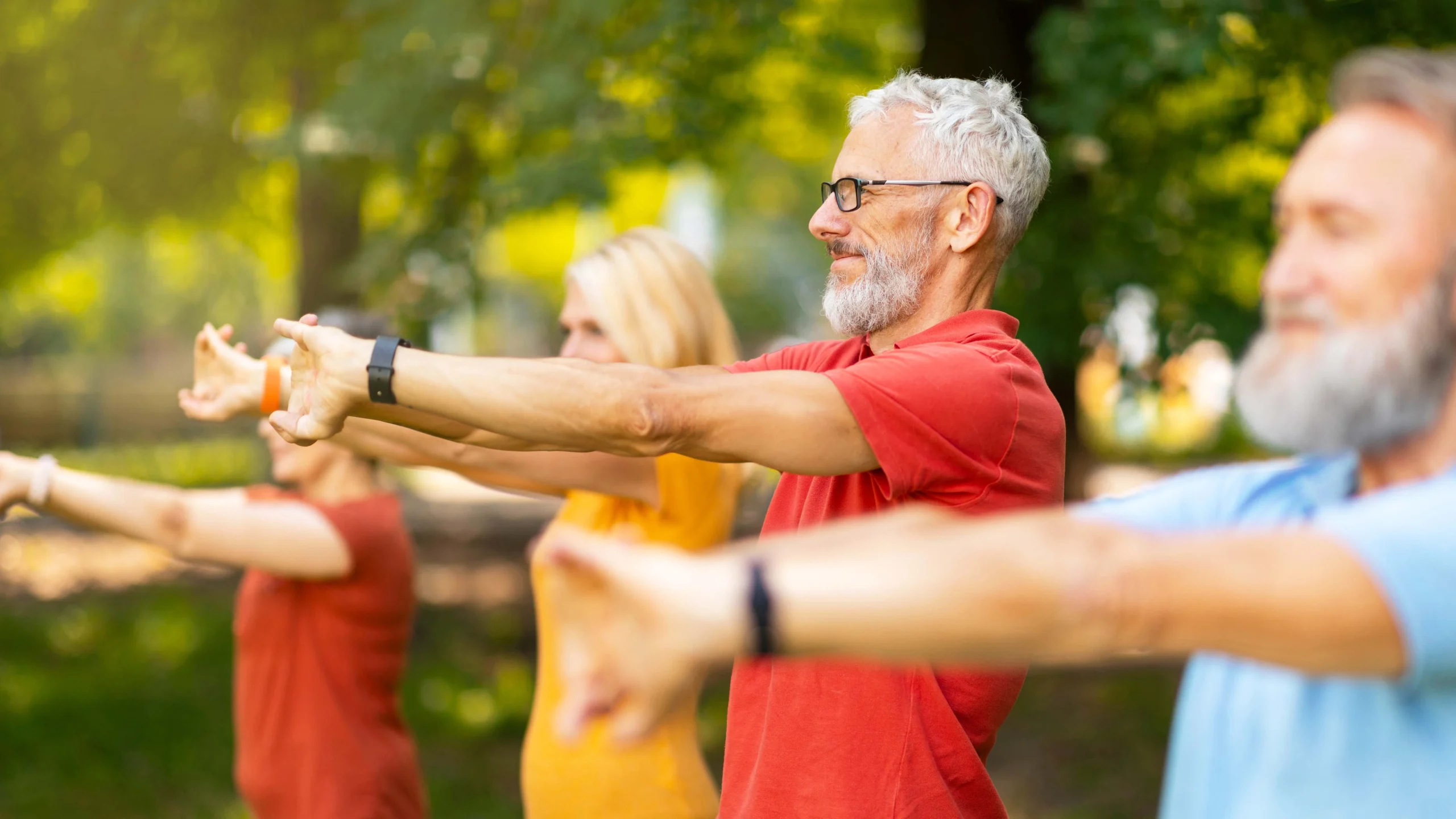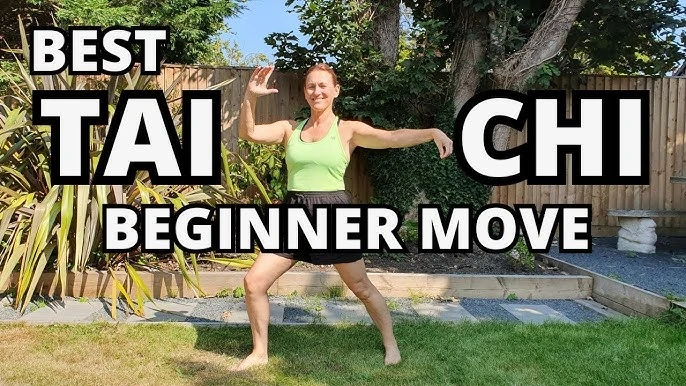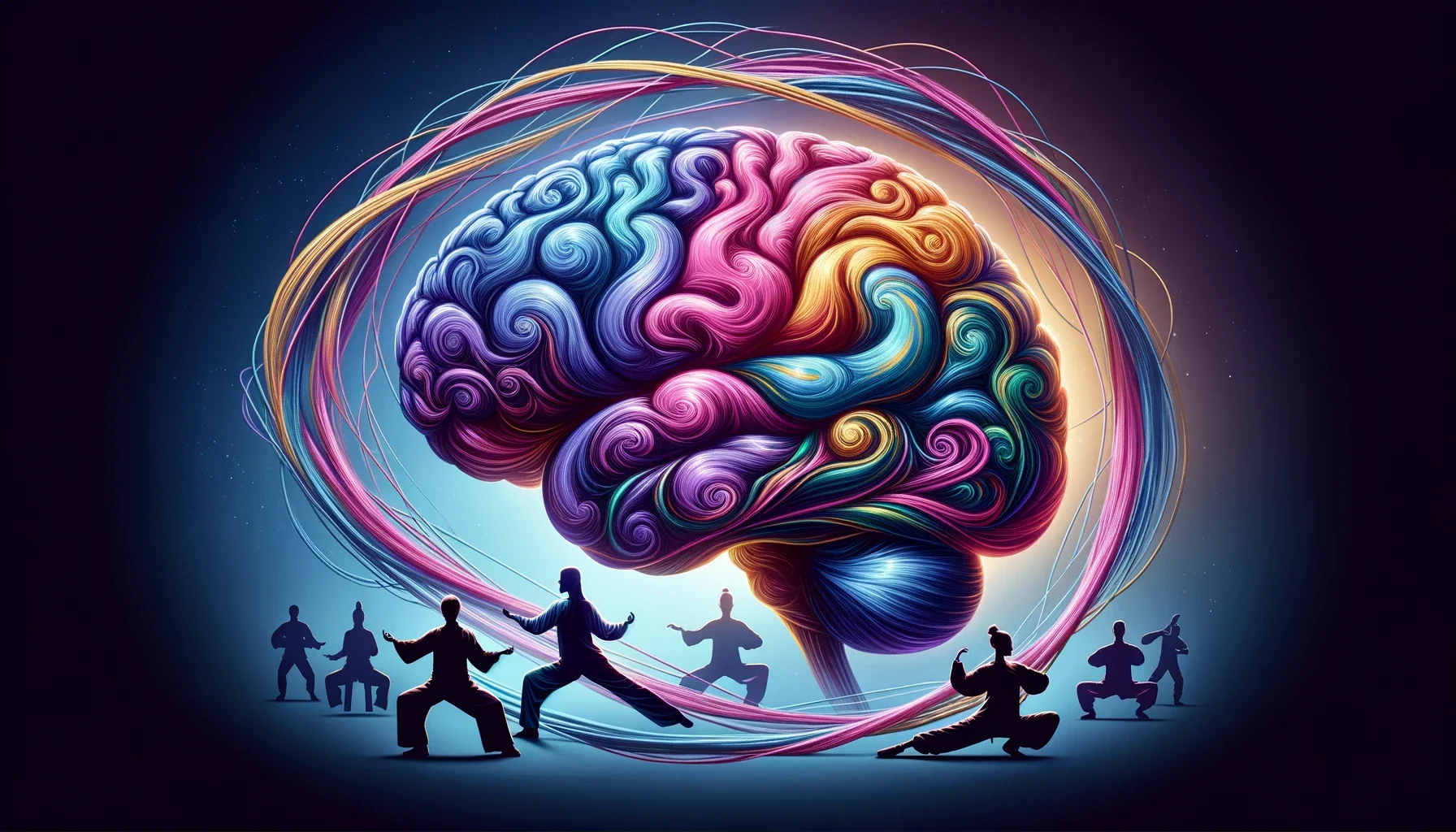
The Easiest Tai Chi for Beginners Over 60
Do you know which are the best tai chi for beginners over 60? In general, to have a healthy and resilient body throughout life, especially in middle age and old age, the best option is to practice regularly and consLPistently. Because in addition to having a healthy and energetic body, you will have a strong spirit and, in addition to these, you will not face economic problems caused by illness. Tai chi training helps the elderly to have a healthier body.
Exercise and health are two separate and complementary options. Although doing exercise and vigorous movements caused by exercise may bring concerns for people in middle age and old age. However, choosing age-appropriate exercise, in addition to addressing such concerns, is a proven and safe way to improve health. If you are also facing these concerns or have a loved one in middle age, follow this article from Human Health Mag to learn about a helpful exercise and an excellent choice for all stages of life, especially middle age.
What is Tai Chi?
This exercise, which is on the list of no-equipment workouts, is a martial art that was developed in the 13th century, but today it is more widely known as a health-improving exercise in the world. The goal of tai chi for beginners over 60 is to focus on deep breathing and learning to concentrate. Increasing concentration improves balance and, as a result, prevents the risk of falling and ultimately breaking bones, which is common in older people. Imbalance, falling and subsequent bone fractures, especially in the hip area, are common in the elderly, especially in women. This is because menopause and hormonal changes cause osteoporosis and reduce the body’s resistance to impact.

Tai Chi exercise with slow and appropriate movements such as hamstring stretches for seniors, helps you to increase your body’s balance with 20 minutes of exercise a day, in addition to gaining the necessary energy, and protect yourself from falls that are common in old age. According to a study published in the Journal of the Geriatrics Society, the risk of falling was reduced by 43 percent in people who practiced tai chi for less than a year, and by 13 percent in those who practiced it for a longer period of time.
Tai chi is a slow and gentle movement that increases flexibility and reduces the worry of imbalance. Tai chi sees the hands, eyes, and other body parts as a unit, with the feet as the base and the back as the main axis. Increasing concentration and improving the body’s balance are not the only benefits of tai chi. In this exercise, muscles are strengthened and breathing exercises are performed. Tai chi’s dynamic movements improve balance and flexibility.
How to Start Tai Chi for Beginners Over 60
If you are planning to start tai chi for beginners over 60, you should know that this sport does not require any special conditions and is suitable for training with any loose and comfortable clothing. This sport can be done alone and at home with any physical condition, but it is recommended to start this sport with the help of a guide for the first sessions. Tai chi also includes flexibility exercises for seniors over 70, and middle-aged people can do them easily.
You may have seen small groups of elderly people engaged in slow and stretching movements in a group in a green space outside. These movements are the same tai chi movements that you have ignored until now. In addition to the advantages mentioned so far, group exercise prevents you from feeling bored, which often comes to people in middle age, and helps you improve your health in a safe way in a group of your peers.
Most Important Effect of Tai Chi Exercise for the Elderly
The most important benefits and effects of tai chi for beginners over 60 are:
- Reducing anxiety and depression
- Improving sleep quality
- High oxygen absorption, better lung function and deep breathing
- Reducing bone fractures in old age
- Increasing leg muscle strength
- Improving body balance by strengthening ankles and knees
- Relief from back pain and neck pain
- Improving immune function
- Improving conditions caused by rheumatism
- Improving pain caused by arthritis
- Reducing blood pressure
- Faster recovery and increased recovery in stroke and heart attack patients
- Improving conditions caused by Alzheimer’s and Parkinson’s
- Increasing memory and concentration

What Movements Does Tai Chi Involve?
Tai chi is non-invasive and relatively gentle on the spine, so many back pain sufferers are starting to try it as a complement to (or sometimes instead of) traditional medical approaches to managing back pain. Additionally, tai chi is inexpensive. Many tai chi movements use the spine as a pivot point, gently bending both the spine and the muscles around it back, forward, and around. Through repeated tai chi movements, the muscles around the spine, including the abdominals and hamstrings, become stronger and more flexible, both of which are important for improving posture and reducing back pain.
When people practice it consistently, they generate more internal energy, which ultimately leads to improved health, a balanced state of mind, agility, and improved balance. It is recommended that people with severe back pain or osteoporosis consult their doctor before trying tai chi. Tai Chi for Beginners Over 60 includes:
- Slow Movements: The slow, flowing movements improve balance, posture, strength, flexibility, coordination, balance, and endurance. Many of the benefits of Tai Chi are compatible with many other forms of low-impact exercise, yet it also has the added benefit of focusing on improving health, balance, and alignment.
- Breathing: The focused, rhythmic breathing emphasizes relaxation and encourages strong circulation. During Tai Chi, oxygenated blood is delivered to the muscles and brain.
- Meditation/Mind: The mindful state during Tai Chi, along with the movements and breathing, is said to relieve stress and anxiety and help relieve pain caused by mental and emotional factors.
Similarities and Differences Between Tai Chi and Yoga
Perhaps, due to the movements and relaxation observed in both tai chi and yoga, it is mistakenly thought that tai chi for beginners over 60 is the same as yoga. However, in addition to the similarities, there are also significant differences in these two sports. In fact, although both sports emphasize concentration and regular breathing and aim to circulate energy in the body, there are differences that make them two completely different sports with their own benefits. These differences include the following:
- Tai chi is a Chinese sport and art, while yoga has its roots in Indian culture.
- Tai chi emphasizes fluid movement, while yoga emphasizes performance and concentration.
- In tai chi, there is a type of breathing called reverse breathing, but in yoga, there is no such thing.
- In tai chi, unlike yoga exercises for seniors, there are jumps and leaps.
- Doing tai chi movements in a group is very effective, but in yoga, this is not necessarily the case.
- In Tai Chi, due to the strong connection between mind and body, there are many brain effects that are not present in yoga.

Different Styles of Tai Chi for Beginners Over 60
tai chi for beginners over 60 A Chinese martial art with deep philosophical roots, popular for its smooth, coordinated movements for a healthy body and mind. This martial art has different styles, each with its own unique characteristics:
Chen Style
- Chen Style, the oldest style of tai chi, is characterized by fast, slow, and explosive movements. This style focuses on physical strength and balance and is suitable for martial artists.
Yang Style
- The Yang Style, the most common style in the world, has slow, steady movements. This style is ideal for beginners and those looking for a moving meditation.
Wu Style
- Wu Style is known for its delicate, shorter movements. This style emphasizes flexibility and mental focus and is suitable for improving balance.
Sun Style
- Sun Style is a combination of tai chi and other martial arts. The movements are gentle and intense, making them suitable for older adults. Each style of Tai Chi helps cultivate Qi energy and harmonize the body and mind. The choice of style depends on personal goals and fitness level.
Tai Chi’s Amazing Effect on Alzheimer’s Prevention
Studies show that tai chi for beginners over 60 can significantly delay the onset of dementia and Alzheimer’s in older adults. Mild cognitive impairment (MCI), which is considered a pre-dementia stage, appears to be strongly associated with type 2 diabetes (T2D), with nearly 45 percent of patients with T2D also having the disorder. Researchers have concluded that tai chi may be helpful in preventing dementia.
A study conducted by researchers at Fujian University found that 24-form tai chi exercises can improve brain function and physical health indicators in people with T2D and MCI. These improvements were observed over a 36-week period. This makes tai chi an effective exercise for reducing the impact of T2D and, consequently, delaying the onset of the progression of MCI to dementia.

The researchers found that after 36 weeks, the tai chi group showed greater signs of improvement compared to the walking group and a control group, although no significant difference was observed between the groups after 24 weeks. The study showed that tai chi was more effective than walking in improving brain function in older adults with T2D and MCI. This highlights the importance of learning this exercise for the general public and has clinical implications for the medical world.
Does Tai Chi for Beginners over 60 Improve Balance?
As you get older, practicing tai chi for beginners over 60 can help improve your balance. Many scientific studies have shown that tai chi, which is known as a form of “moving meditation,” is great for improving balance and preventing falls. Tai chi is not only used to improve balance, but it may also help manage a range of chronic health problems.
Research suggests that practicing tai chi may help reduce pain associated with conditions such as osteoarthritis, chronic back pain, and fibromyalgia. Some studies also suggest that tai chi can stimulate the immune system and improve quality of life in people with major illnesses such as cancer and heart disease. In addition, tai chi may help reduce mental health issues such as anxiety.
Concluding Remarks
In general, tai chi for beginners over 60 is considered a safe exercise and has few side effects. A person may experience some pain at first after doing these exercises. However, it should be noted that more difficult forms of tai chi and its incorrect exercises can damage the joints. If you are new to tai chi, try to do it under the supervision of an instructor. You can even consult your doctor before starting this exercise.
Could you help us make this content even better? What do you love, and what can we improve? Share your thoughts below, feedback is the key to creating better content for you.

Frequently Asked Questions
Is Tai Chi Just for Seniors?
Although Tai Chi has become more popular in recent years with the elderly and those with mild physical disabilities, it is actually a practice that is suitable for people of all ages. The movements are low-impact and non-invasive, yet they strengthen muscles, improve balance, and increase flexibility. Even professional athletes use Tai Chi to improve focus, reduce injury risk, and improve coordination.
Why Should You Take Tai Chi Seriously?
Tai chi is not just a sport, but a way of living a balanced life. Regular practice can help improve sleep quality, lower blood pressure, boost immune function, and improve mood. In recent years, numerous scientific studies have shown tai chi to be an effective way to reduce stress, depression, and anxiety. On the other hand, for people with chronic pain, balance problems, or movement disorders, tai chi can be a complementary therapy.
How to Start Tai Chi?
Starting to practice Tai Chi does not require special facilities or high physical fitness. You can start practicing even at home by watching reliable instructional videos and focusing on the basics. However, to learn the techniques more accurately and prevent the formation of bad habits, it is recommended to attend in-person or online classes with professional instructors. Comfortable clothing, a quiet space, and a specific time each day are the basic requirements for starting this path.
